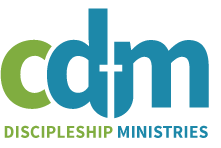Part 1 of this article introduced the subject of learning styles and described the four basic ways we process new information. Part 2 described the way we perceive new information, concrete or abstract, and the different ways we order that new information, sequential or random. Part 3 will explain the three basic ways we take in new information.
Simply understood, learning modalities are the sensory channels through which we give, receive, or store information. These include visual learners who prefer to take in information by seeing it. Auditory learners must hear the information, and tactile/kinesthetic (T/K) learners need to feel and touch in order to understand.
In any given group of learners, 25-30% will be strongly visual, 25-30% strongly auditory, 15% T/K, and 25-30% mixed. However, young children are almost all T/K, with many changing to visual by school age. Some will again change later to auditory. Keep this in mind depending on what age you teach. Girls more commonly learn by hearing; and boys have a higher tendency to learn through movement, which might explain why boys tend to drop out of Sunday school more often than girls. But, it must also be said that if a student is very interested in a subject, desire will often override their modality or learning deficiency. These same preferences are evident in adult learners. Personally, I am equal in my auditory and visual ability, with almost no T/K.
Auditory Learners: It is commonly understood that people remember only 10% of what they hear once. (Pastors take note.) This percentage is higher for auditory learners, depending on how long they have to listen. Historically it was said that the average adult can pay close attention for a maximum of 20 minutes. Unfortunately, today that time has dropped to 12 minutes. (Are you still listening pastors?) Attention span is improved by using other aids like printed notes, overheads, PowerPoint, etc. These learners learn best in group settings where they can listen and enter into the discussion. If you have ever observed a person moving his lips while reading, it is because he has to hear the words in order to understand them.
Visual Learners: The more visual images given to these learners the more they will remember.
“Albert Einstein was a visual learner. He had a marked disability with auditory learning and the use of language. Yet he had an extraordinary ability to construct complex card houses, use building blocks, and manipulate geometrical diagrams. These skills suggest that he had a specialized mental ability for visual-spatial (space) perception, visual reasoning, and visual memory. If he were evaluated in the traditional way, he would be labeled learning disabled.”[1]
Making great use of visual aids will even help poor readers. In fact, after 55 studies, students always did better on tests when visuals were given.[2]
Click here to read entire publication in PDF (Acrobat Reader required)
Tactile/Kinesthetic: These are the students who suffer the most in a class setting or while trying to listen to a sermon. Tactile means that the student needs to physically touch something to understand it; kinesthetic students need to be physically moving in some way in order to stay with the information being shared. I had a student who used to sit in the back of the class and knit. She never looked up or participated in the discussion, but she did very well on the test. She told me that unless her hands were in motion she could not listen.
There is more and more information becoming available on the internet on learning styles and modalities, and I would encourage you to become as learned as possible about the subject if you want to become a better teacher or preacher. I would also again refer you to Marlene LeFever’s book, Learning Styles, for more help.
On our website, I will post a modality test for you to take here. It is free and will help you understand what are your strengths and weaknesses. This should help you understand how to better work with your students, or even your children, who have a preference different from yours. Do all you can to move out of your comfort zone and use methods that will reach all the learners God has entrusted to your care.
If you are interested in having someone come to your church and do a seminar on learning styles and modalities, see our website, www.pcacep.org, under training/regional trainers.
[1]Marlene LeFever, Learning Styles (Colorado Springs: D.C. Cook, 1995), p.103.
[2]Ibid.
